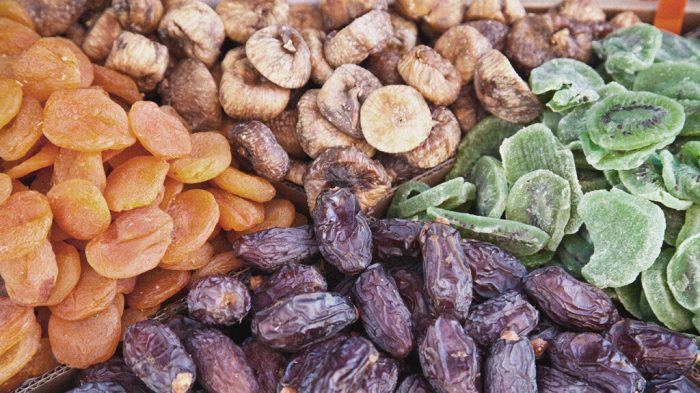It has been just over a year since the World Health Organization (WHO) declared COVID-19 a global pandemic. In that time, more than 121 million people have contracted the virus, and 2.6 million have died.
Researchers have developed multiple vaccines over the past year, which are being administered all over the world. Recently, in some regions, the number of new COVID-19 cases has gone down.
However, testing is vital, as it allows medical professionals to know who has the virus and act quickly to quarantine others who may be at risk of exposure.
A team led by researchers from the University of Surrey in Guildford, England, developed a new method to test for COVID-19. The test utilizes skin swabbing, which is a non-invasive procedure.
COVID-19 testing
There are two types of diagnostic tests that can detect whether a person has the virus that causes COVID-19 — molecular tests and antigen tests.
Molecular tests detect genetic material from the virus, and antigen tests detect proteins from the virus. These tests diagnose active infections, and medical professionals perform these tests by collecting mucus samples from individuals.
As both types of tests generally involve using a long test swab in a person’s throat or nasal passages, most people consider them invasive. Molecular tests typically involve a nasopharyngeal swab (a swab of the part of the throat behind the nose), a nasal swab, or a throat swab. Experts consider molecular tests to be highly accurate, but it can take days to get results.
Antigen tests take less time to get results, but these tests are generally less accurate. Antigen tests may have higher rates of false negatives compared with molecular tests.
Doctors also use antibody testing to find out whether someone has recently had an infection. This type of test requires a blood sample.
The current testing methods have some limitations — the molecular tests can take longer, the antigen tests can be less sensitive, and both can be invasive. However, vaccine researchers continue trying to improve COVID-19 testing.
Not only can improved testing methods encourage people to get tested, but accurate results can also reduce the spread of the virus.
Sebum testing
A team led by researchers from the University of Surrey in the United Kingdom recently published a paper that describes a new method for testing COVID-19. The paper appears in The Lancet-EClinicalMedicine.
Instead of using mucus or blood samples to test for the virus, their method uses skin swabs to test sebum secretions.
The test analyzes the sebum secretions present on the skin. Sebum is “an oily substance, produced in the sebaceous glands.”
Sebaceous glands are located directly beneath the skin. Sebum is made up of a mixture of lipids, including triglycerides and fatty acids.
Study lead author Matt Spick says, “COVID-19 damages many areas of metabolism. In this work, we show that the skin lipidome can be added to the list, which could have implications for the skin’s barrier function, as well as being a detectable symptom of the disease itself.”
The sebum swab test works by analyzing the possible changes the virus causes in the body.
“Sebum sampling has the potential to support both needs by looking at what the virus does to us, rather than looking for the virus itself,” the authors write.
Testing sebum secretions for a disease is not new. Previous studies have identified changes in the profiles of sebum secretions in people with Parkinson’s disease and with type 1 diabetes.
“Investigating new methods of diagnosis and surveillance in a new disease such as COVID-19 that has had such a devastating effect on the world is vital,” says study co-author Dr. George Evetts, a consultant in Anaesthesia & Intensive Care Medicine at Frimley Park Hospital in Surrey, U.K.
“Sebum sampling is a simple, non-invasive method that shows promise for both diagnostics and monitoring of the disease in both a healthcare and a non-healthcare setting.”
Skin-swab results
The team obtained samples from 67 hospitalized participants. Of the participants, 37 tested negative for COVID-19, and 30 tested positive.
Researchers collected the samples by swabbing a gauze on the upper back skin of the participants.
“A sample can be collected easily and non-invasively via a gentle swab of skin areas rich in sebum (for example the face, neck or back),” the authors write.
The lipid profiles showed that the levels of certain lipids were lower in participants who had tested positive for COVID-19 than people who had tested negative. The study authors noted that triglycerides were the most consistently reduced lipid in the participants with COVID-19.
The study authors note that the sample in the research was small, and the evidence is still preliminary.
However, senior study co-author Dr. Melanie Bailey thinks healthcare professionals could use this form of testing in similar situations in the future. She adds:
“Unfortunately, the specter of future pandemics is firmly on the top of the agenda for the scientific community. Our study suggests that we may be able to use non-invasive means to test for diseases such as COVID-19 in the future — a development, which I am sure, will be welcomed by all.”










